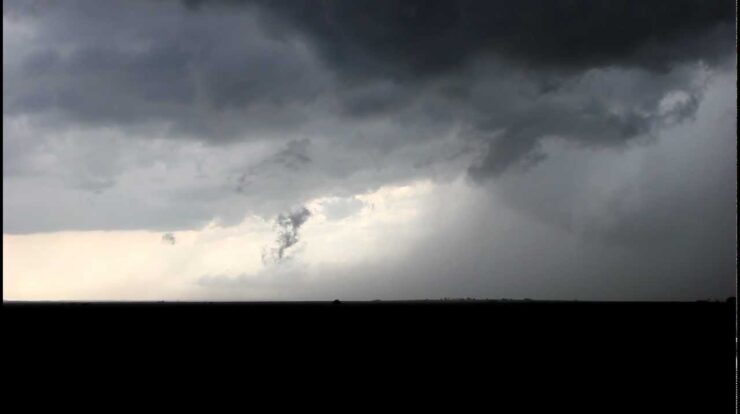
The Blair tornado, a catastrophic event that struck in the heart of the Midwest, left an unforgettable mark on the region. This powerful twister unleashed its fury, causing widespread destruction and leaving a legacy that continues to shape the community today.
As the tornado touched down, it carved a path of devastation across the landscape, uprooting trees, leveling buildings, and leaving countless lives shattered. The human toll was immense, with numerous injuries and fatalities reported. The economic losses were also staggering, as businesses and infrastructure were severely damaged.
Background of the Blair Tornado
On May 27, 1892, a violent tornado tore through the town of Blair, Nebraska, leaving a trail of destruction and devastation. The tornado, an F4 on the Fujita scale, was one of the deadliest and most destructive tornadoes in Nebraska’s history.
The tornado formed as a result of a powerful supercell thunderstorm that developed over the Great Plains. The storm produced hail and heavy rain before spawning the tornado, which touched down near the town of Fort Calhoun and traveled northeast for approximately 15 miles, before dissipating near the town of Kennard.
Meteorological Conditions, Blair tornado
The meteorological conditions that led to the formation of the Blair tornado were characterized by strong wind shear and instability in the atmosphere. A strong jet stream aloft provided the necessary wind shear, while a warm, moist air mass at the surface and a cold, dry air mass aloft created instability.
As the storm moved through the area, it encountered a favorable environment for tornadogenesis. The combination of strong wind shear and instability allowed the storm to produce a rotating updraft, which eventually became the tornado.
Impact of the Blair Tornado
Physical Damage
The Blair tornado caused extensive physical damage to the town of Blair and the surrounding area. The tornado destroyed over 100 homes and businesses, leaving many residents homeless.
The tornado also caused significant damage to infrastructure, including roads, bridges, and power lines. The storm also uprooted trees and destroyed crops, causing additional economic losses.
Human Toll
The Blair tornado resulted in the deaths of 71 people, making it one of the deadliest tornadoes in Nebraska’s history. The majority of the victims were residents of Blair, and many were killed as their homes were destroyed.
In addition to the fatalities, the tornado also injured over 200 people, some of whom were seriously injured.
Economic Losses
The Blair tornado caused significant economic losses, estimated at over $1 million (equivalent to over $30 million in today’s dollars). The cost of rebuilding the town and providing aid to the victims was a major burden on the community.
Response and Recovery Efforts
Immediate Response
In the immediate aftermath of the tornado, local authorities and emergency services responded quickly to the disaster. First responders worked to rescue victims, provide medical care, and secure the area.
The Red Cross and other aid organizations also provided assistance to the victims, providing food, shelter, and clothing.
Long-Term Recovery
The long-term recovery process from the Blair tornado was a slow and challenging process. The town of Blair was rebuilt, but it took many years for the community to fully recover from the disaster.
The recovery process involved rebuilding homes and businesses, as well as providing support to the victims. The community also worked to develop new safety measures to prevent future tornadoes from causing such devastation.
Scientific Study of the Blair Tornado

The Blair tornado was the subject of extensive scientific study. Scientists analyzed the tornado’s path and characteristics to learn more about how tornadoes form and behave.
The research conducted on the Blair tornado helped to improve our understanding of tornadoes and led to the development of new forecasting and warning systems.
Findings and Insights
The scientific study of the Blair tornado provided valuable insights into the behavior and characteristics of tornadoes.
- Scientists learned that tornadoes can form in a variety of different environments.
- They also learned that tornadoes can be extremely destructive, even in small towns.
- The research also helped to improve our understanding of how tornadoes move and how they can be tracked.
Cultural Impact of the Blair Tornado
The Blair tornado had a significant impact on the local community and beyond. The disaster shaped local history and folklore, and it also became a symbol of the power of nature.
Local History and Folklore
The Blair tornado is still remembered in the local community today. The disaster is often discussed in local history books and folklore, and it is also the subject of a number of local legends.
The tornado has also become a symbol of the resilience of the local community. The people of Blair worked together to rebuild their town after the disaster, and they have continued to thrive in the years since.
Epilogue
The Blair tornado serves as a sobering reminder of the destructive power of nature. It highlights the importance of preparedness and resilience in the face of such extreme weather events. The lessons learned from this tragedy have informed advancements in tornado forecasting and warning systems, helping to save lives and protect communities from future disasters.
Q&A
What caused the Blair tornado?
The Blair tornado formed as a result of a combination of favorable meteorological conditions, including high wind shear, instability, and moisture.
What were the most significant impacts of the tornado?
The tornado caused widespread damage to buildings, infrastructure, and the environment. It also resulted in numerous injuries and fatalities.
How did the community respond to the tornado?
Local authorities and emergency services responded swiftly to the tornado, providing immediate assistance to those affected. The community also rallied together, offering support and helping with the recovery process.





